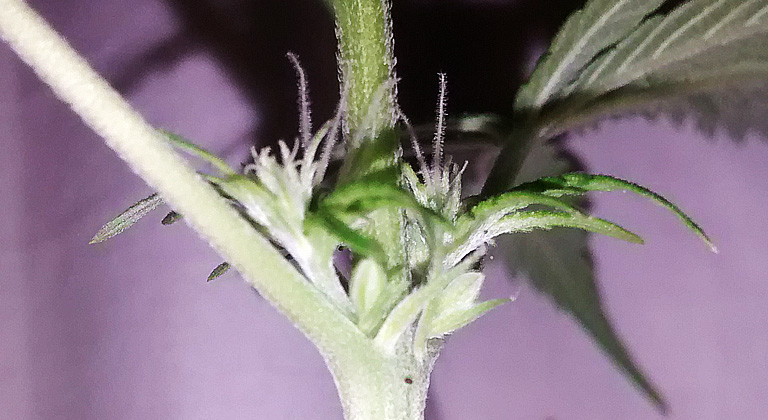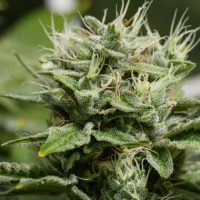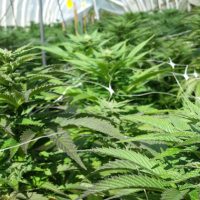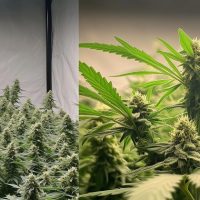Hermaphroditism in cannabis plants refers to the presence of both male and female reproductive organs on the same plant, meaning the cannabis plant exhibits flowers with pistils (buds) and pollen sacs at the same time.
While hermaphroditism in cannabis plants may seem like a simple biological curiosity, it holds significant practical implications for growers, especially those aiming for high-quality flowers with elevated cannabinoid levels and premium seedless bud harvests.
These plants are not only less productive but can also pollinate other female plants (and themselves), ruining the entire harvest with unwanted seeds that can cause an unpleasant taste when consuming the buds.
In this post, we will explore the causes of hermaphroditism in cannabis plants, how to identify it, and what measures can be taken to prevent it from happening. Understanding what it is and the factors that can cause it are crucial for a successful yield.
What is Hermaphroditic Cannabis?
Hermaphroditic cannabis is a biological phenomenon in which a cannabis plant develops both male and female flowers. This contrasts with the typical pattern of cannabis plants, which are usually dioecious, meaning exclusively male or female. In a hermaphroditic plant small pollen sacs, which are characteristic of male plants, can be found alongside buds or flowers that typical of female plants.
This characteristic is particularly relevant in cannabis growing, as female flowers are most prized for their higher concentration of cannabinoids such as THC and CBD, male flowers are primarily used for pollination and reproduction – to create cannabis seeds.
The appearance of hermaphroditic cannabis plants in a crop can lead to unwanted pollination if not addressed in time, reducing the quality and potency of female flowers by turning them into “seed producers”.
Hermaphroditism can result from both genetic factors and environmental stress to which cannabis plants are subjected. Some cannabis strains are genetically more prone to developing hermaphroditic traits, but even plants with stable genetics can exhibit hermaphroditism when exposed to certain stressful conditions, such as drastic changes in their light cycle, extreme temperatures, physical damage, or nutritional deficiencies.
It’s crucial for cannabis growers to identify early signs of hermaphroditism as soon as possible. Early detection allows growers to take preventive measures to protect the rest of their plants.
Hermaphroditic cannabis plants, although challenging, offer a unique opportunity to better understand the biology of cannabis and the delicate interactions between the plant and its environment. This knowledge can be a valuable learning experience for the grower, as a better understanding of the plant allows for improvements in growing techniques and genetic selection.
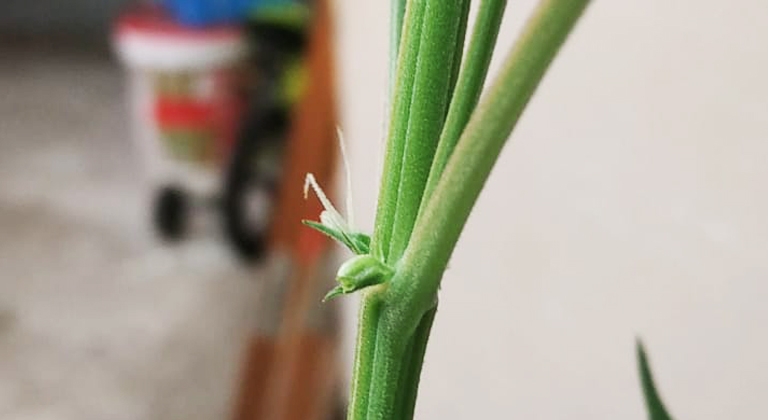
What Causes Hermaphroditism in Cannabis Plants?
Hermaphroditism in cannabis plants is a mechanism for species perpetuation; when the plant, under certain circumstances, perceives a threat. Consequently, it develops both male and female organs to self-pollinate and create seeds before reaching the end of its life cycle.
Hermaphroditism in cannabis plants can occur due to various factors, generally divided into two main categories: genetic factors and stressful environmental conditions.
Genetic Factors that can Trigger Hermaphroditism in Cannabis Plants
Genetics play a crucial role in a plant’s tendency to develop hermaphroditism. Some cannabis strains are genetically predisposed to it, and in these strains, hermaphroditism can manifest even under ideal conditions.
Genetic selection and stabilization are essential to minimize risks. It’s advisable for cannabis growers to choose to buy seeds from reputable and well-known seed banks. This ensures that they are acquiring stable strains and reduces the chances of hermaphroditism.
Stressful Environmental Conditions that can Induce Hermaphroditism in Cannabis
In addition to genetics, hermaphroditism can be induced by environmental stress. Cannabis plants are sensitive to their surroundings, and certain conditions can trigger the development of reproductive organs of both sexes.
These stress factors include:
- Changes in the light cycle: Interruptions or inconsistencies in the light cycle, especially during the flowering phase. Feminized cannabis seeds require a specific cycle of darkness and light to grow and flower correctly. If there is light pollution, cannabis plants can become stressed and exhibit a hermaphroditic response.
- Extreme temperatures: Both excessive heat and extreme cold can stress cannabis plants, leading them to develop characteristics of both sexes.
- Physical damage or aggressive pruning: Injuries to the plant caused by the grower (or wildlife in the case of guerrilla grows), whether accidental or due to overly aggressive pruning, could trigger a stress response resulting in hermaphroditism.
- Use of chemicals or pesticides: Some chemical products can be too aggressive for cannabis plants, causing stress and potential hermaphroditism.
- Nutritional deficiencies or improper watering: Incorrect nutrient or water management can cause significant stress to cannabis plants, disrupting their proper development and flowering, leading to the appearance of reproductive organs of both sexes.
Understanding the factors that can cause cannabis to develop hermaphroditism is necessary to prevent this phenomenon. It’s essential to carefully monitor plant conditions, observe the plants, and adjust practices as needed to maintain a stable and stress-free environment.
Not only does this help prevent hermaphrodite plants, it’s also essential for achieving an abundant, high quality yield.
Problems Caused by Hermaphroditism in Cannabis Cultivation
The appearance of one or more hermaphroditic plants in a cannabis crop is typically not good news, and the reasons for this are detailed below:
Decrease in the Quality and Quantity of the Yield
Hermaphroditic cannabis plants will produce flowers of lower quality, with cannabinoid levels lower than those of flowers from a female plant that has not developed pollen sacs. This decrease in quality is particularly problematic for cannabis enthusiasts seeking high THC or CBD yields, especially in seedless buds.
The quantity of the harvest will also be affected since the presence of both male and female reproductive organs in the same cannabis plant directs its energy towards seed production at the expense of flowers.
Risks of Cross-Pollination with Other Female Cannabis Plants
Hermaphroditism in cannabis plants also increases the risk of cross-pollination, as hermaphroditic plants can release pollen and fertilize nearby female plants. In other words, a single hermaphroditic plant can compromise the quality of an entire crop, whether it’s in a grow room, an outdoor setting, or large-scale grows.
How to Prevent Hermaphroditism in Cannabis Plants
In order to prevent the problems mentioned above, it’s essential to thoroughly inspect cannabis plants, identifying and isolating hermaphrodites as early as possible to prevent unwanted pollination.
If this is done at an early stage, before the pollen sacs have opened, the risks can be mitigated completely. However, when removing the hermaphroditic cannabis plant from the area, it’s important to handle it with care to prevent the sacs from opening and spreading pollen.
Prevention is key, and this may involve adjusting certain practices such as control of environmental stress, and improvements in irrigation techniques.
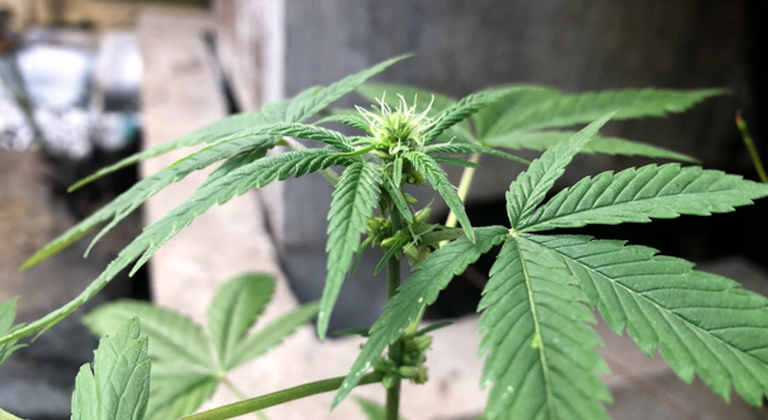
How to Identify a Hermaphroditic Cannabis Plant
Identifying hermaphroditic cannabis plants in a timely manner can make the difference between a bountiful and high-quality harvest and a mediocre one.
What signs to look for in cannabis plants to determine if they are hermaphroditic
Identifying a hermaphroditic cannabis plant requires a careful observation of the plants for the most common visual signs, including the appearance of pollen sacs typical of male plants alongside the pistils or buds that characterize female cannabis plants.
These pollen sacs are usually small and may go unnoticed among the more prominent flowers. Therefore, early detection is crucial and is often possible during the pre-flowering phase when the plants begin to display their sexual characteristics.
Early Sex Differentiation in Cannabis Plants
The ability to differentiate between the sexes of cannabis plants in the early stages is fundamental to preventing problems. Typically, plants reveal their sex a few weeks after the start of the flowering phase. Female individuals develop buds with pistils, commonly called “hairs,” while males produce pollen sacs.
In the case of hermaphroditic cannabis plants, both characteristics are observed simultaneously. Recognizing these signs early on is essential for taking preventive measures, such as removing or isolating hermaphroditic plants before they can negatively impact the rest of the crop.
Identifying hermaphroditic cannabis plants and removing them from the area is key to preserving quality. It’s worth noting that monitoring must be much more thorough in the case of legal commercial large-scale plantations.
How to Prevent the Occurrence of Hermaphroditic Plants in Cannabis Cultivation?
To avoid headaches, prevention is the best approach. Here are some measures to consider:
Purchase cannabis seeds with stable genes
Preventing hermaphroditism begins with selecting cannabis seeds, ensuring they come from stabilized strains. To minimize unnecessary risks, it’s always advisable to buy seeds from reputable seed banks and choose genetically stable strains. Quality cannabis seeds have a lower likelihood of developing hermaphroditic traits under normal conditions.
Additionally, it0s advisable to research and select specific strains known for their resistance and genetic stability, significantly reducing the risk of hermaphroditism.
Environmental control and good cultivation practices to prevent hermaphroditism in cannabis
Controlling the environment is essential to prevent stress in cannabis plants, which can be a precursor to hermaphroditism. Maintaining stable and optimal conditions in terms of light, temperature, humidity, and nutrition is crucial.
Sudden changes or extreme conditions should be avoided. For example, ensuring a consistent and uninterrupted light cycle during the flowering phase can reduce the risk of stress-induced hermaphroditism.
Equally important is proper irrigation and a balanced supply of nutrients.
Avoid stress in cannabis plants to reduce the chances of hermaphroditism: Preventing stress in marijuana plants is a key aspect to hinder the development of hermaphroditic cannabis plants. It’s advisable to avoid physical damage to the plants (such as cuts or breakage), protect them from pests and diseases, and minimize the use of chemical products.
Plants should be regularly monitored for signs of stress, and corrective measures should be taken immediately. Preventing and mitigating stress not only helps avoid hermaphroditism but also contributes to healthier cannabis plants that produce a more abundant yield.
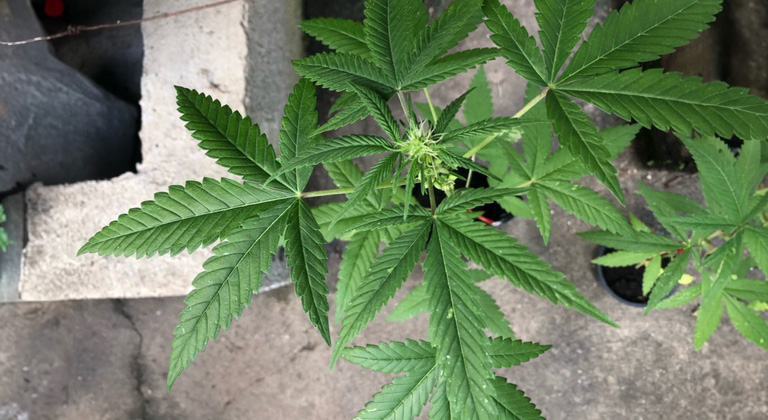
What to Do When Hermaphroditic Cannabis Plants Appear in the Crop
When a hermaphroditic cannabis plant is detected within the crop, it’s advisable to act promptly to prevent it from pollinating the rest of the female plants.
Isolating hermaphroditic cannabis plants or eliminating them?
Isolation can be a viable option if the plant has already developed a significant number of flowers and you still want to take advantage of it. However, it’s crucial to ensure that it’s far enough away from female plants to avoid cross-pollination. Nevertheless, for those who do not want to take any risks, eliminating the plant is definitely the safer option, especially in the case of a legal large-scale grows where cross-pollination could affect a significant number of plants.
How to make use of a hermaphroditic cannabis plant?
Some growers prefer to make use of hermaphroditic cannabis plants, as they can produce seeds through self-pollination that can be utilized for future crops.
In this case, it is important to consider the cause of hermaphroditism. If all the correct cultivation parameters have been met (temperature, use of organic products, non-aggressive cultivation and pruning techniques), the likelihood is that the factor is genetic. In that case, one must ask the question: Is it really worth planting seeds with a higher chance of producing hermaphroditic plants?
Another option that many choose is to make extracts or cannabis concentrates with the buds of the hermaphroditic plant. The cannabis seeds found in the buds, in this case, won’t be a problem, as they’ll be removed in the process. However, it’s essential to consider that the buds from the hermaphroditic plant will likely have lower cannabinoid levels than those of a female plant.
In any case, if the decision is made to keep the hermaphroditic plants alive, emphasis must be placed on rigorous isolation, not only for the well-being of the current crop but also to avoid harming other potential growers, as pollen can travel kilometers with the wind or air currents.
Final Conclusions on Hermaphroditism in Cannabis Plants
Growing cannabis can be a rewarding activity with patience and attention. As with other issues that may arise, such as pests, fungi, or other challenges, effective management of hermaphroditic plants will be vital for the success of your yield.
Being proactive and acting quickly and efficiently is key, along with selecting stable and quality cannabis seeds from reputable banks and proper environment management. Like everything in life, information is power, and knowledge and understanding of this phenomenon are indispensable tools to ensure high-quality yields and avoid complications that may arise from hermaphroditic plants.
Do you have any questions? Have you ever encountered hermaphroditic cannabis? Leave your comment below and share your opinion with our community!
La Huerta Grow Shop
